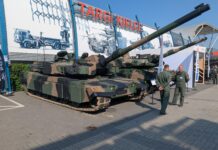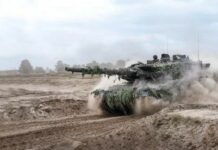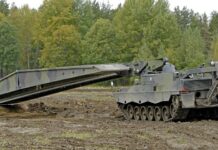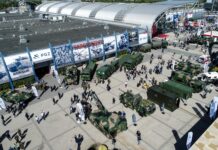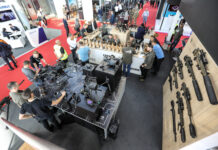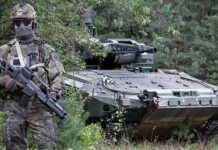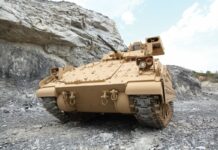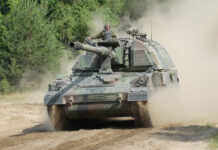Norway is in the final stages of a procurement programme for a new Main Battle Tank (MBT) to replace their in-service Leopard 2A4NO. Norway has downselected to two finalists: the Hyundai Rotem K2 Black Panther, produced in South Korea and recently purchased by Poland, and the Krauss-Maffei Wegmann (KMW) Leopard 2A7 from Germany. The goal is to acquire 82 new MBTs, at a total cost of approximately EUR 1.8 Bn., and initial fielding of the new MBT scheduled for 2025.
However, clouds of doubt are now gathering over the project. In November 2022, the Norwegian Chief of Defence, General Eirik Kristoffersen, dropped what Norwegian news has referred to as a “political bombshell”, when he recommended to the Ministry of Defence that Norway should abandon the procurement of new MBTs. General Kristoffersen’s argument is that procuring new MBTs would mean “spending a lot of money on defence, instead of on mobility and firepower”.
General Kristoffersen has declined to further comment on his recommendation, and has stated that he will discuss it with the Norwegian government. According to the Norwegian newspaper Dagens Næringsliv (Business Today), the Chief of Defence further recommends that, rather than new MBTs, the Norwegian armed forces should instead focus on procuring helicopters and long-range artillery.
The General is not alone in his implied criticism of the MBT procurement project. In 2021, the former Chief of Defence and now Senior Researcher at the Norwegian Defence Research institute, Sverre Diesen, wrote a commentary for the Nordnorsk Debatt (North Norway Debate) website where, among other things, he stated: “Long term, this reluctance to face reality can end up costing Norwegian taxpayers NOK 19 Bn (EUR 1.8 Bn), which is the amount planned for new main battle tanks for the Army. All in order to further strengthen an operational concept that was unsuitable from the start”.
Along similar lines, in an article for the Forsvarets Forum (Defence Forum) website, Øystein Tunsjø, Professor at the Institute of Defence Studies at the Norwegian Defence Academy, and member of the Norwegian Defence Commission, expressed agreement with the Chief of Defence’s recommendation, but at the same time he stated he was surprised at the timing. To recommend completely abandoning the project at this late stage is, to put it mildly, bound to be controversial. The project is indeed at a late stage – on 08 December, the Norwegian Defence Materiel Agency was reported to have forwarded their recommendation on the new MBT selection to the Norwegian Defence Staff.
The response to General Kristoffersen’s recommendation provided by the Norwegian Minister of Defence, Mr. Bjørn Arild Gram, to was that “the process (of procuring new MBTs) will continue according to the plan we have made for the future”. Gram also stated that he and his ministry would engage in a dialogue with the General regarding his assessment of the MBT project. With regards to the background for and reasoning behind General Kristoffersen’s recommendation, he has provided no further explanations. One factor in his reasoning could be his background in Special Forces, where mobility, flexibility and concentrated firepower is paramount.
Analysts and commentators have also pointed out that the war in Ukraine has shown MBTs to be fairly vulnerable to anti-tank missiles, unmanned aerial vehicles (UAVs) and loitering munitions. On the other hand, it should also be considered that many of the MBTs that have proven vulnerable in the Ukraine conflict are older, Soviet-era designs, the performance of which might not be fully representative of more modern MBT designs.
However, the Norwegian Chief of Defence is most likely correct in his assessment that long-range strike capabilities, whether in the form of artillery or aircraft, will give the Norwegian Defence Forces a comparatively greater capability increase than new MBTs. However, it could also be argued that neither aircraft nor long-range artillery can occupy and hold terrain, or directly engage enemy forces on the ground – tasks that the MBT has repeatedly demonstrated it is very good at.
Furthermore, regardless of developments in NATO, national defence and sovereignty enforcement remains one of the primary tasks of a nation’s defence forces, and one could reasonably ask if the Norwegian Armed Forces are capable of fulfilling this task without a heavy armour capability. This view is also reflected by the chief of the Norwegian Defence Operational Headquarters, Lieutenant General Yngve Odlo. Lt Gen. Odlo stated on the previously mentioned Defence Forum website that “MBTs are an important component of the land defence” and “the requirement for MBTs is well documented, and will remain for a minimum of 15-20 years. I see no alternative”. The chief of the Norwegian Army Armoured Battalion, Lieutenant Colonel Lars Jansen, echoed this sentiment in the same article: “The discussion should not be about either/or, but about building up an Army with all required capacities. This includes mechanised forces with MBTs, but also air defence and long-range fires”.
The ultimate Norwegian decision will not just depend on available funding, but also on Norway’s strategic situation, especially once Sweden and Finland join NATO, and Norway is no longer a ‘border state’. This being the case, the Norwegian Defence Forces may feel that a direct, surprise attack on Norwegian territory becomes much less likely and that, for a given investment, long-range strike systems could provide a better means of supporting the ‘new border countries’ Sweden and Finland, than MBTs in case of an attempted invasion. What complicates the Norway’s decision is the fact that, whichever path is taken, it will have implications beyond the borders of Norway. For instance, a decision to cancel the MBT programme could have a significant impact on defence planning in Norway’s fellow Nordic countries.
On the industrial side, there is also potential for considerable consequences. As reported in October 2022, the Nordic ammunition producer Nammo has entered into an agreement with Hyundai Rotem to develop 120mm ammunition for the K2 Black Panther. It is plausible that a decision to abandon the MBT programme would have consequences for this agreement. Additionally, any delays in making a decision on the MBT programme could have an impact on prices and delivery times, and therefore on the entire project’s timeline. As such, at this moment, it is difficult to predict what will, or what should happen next.
Thomas Nielsen






